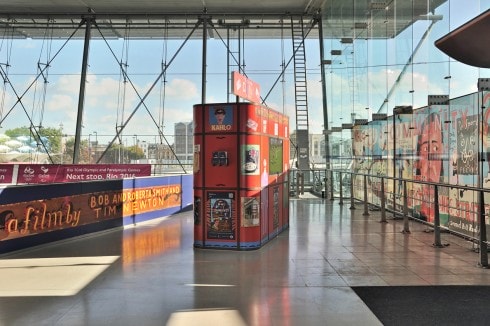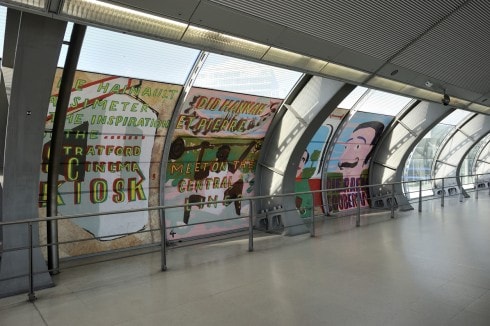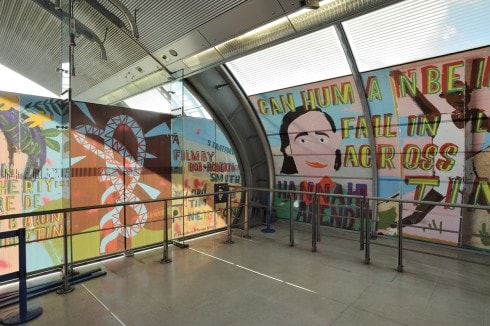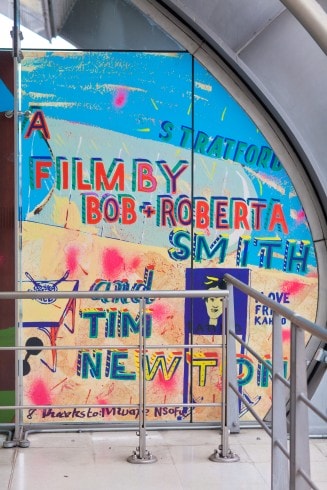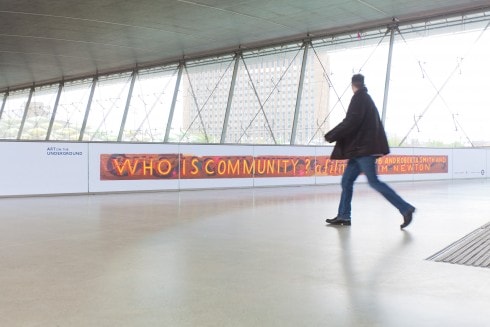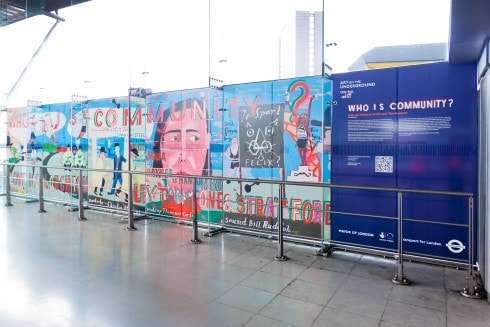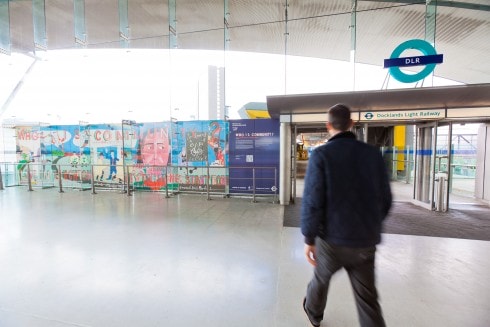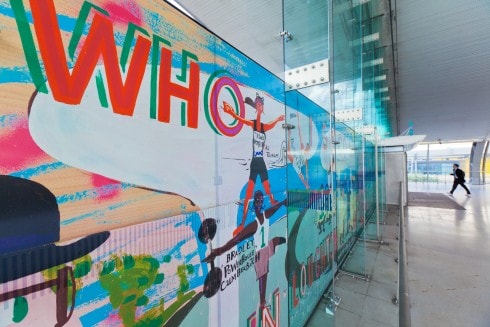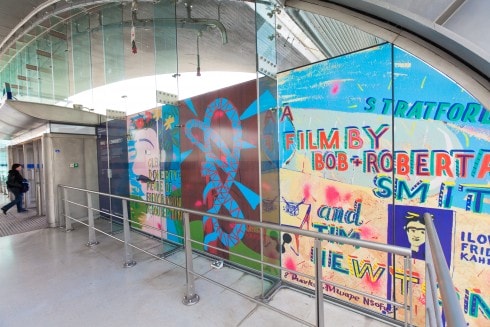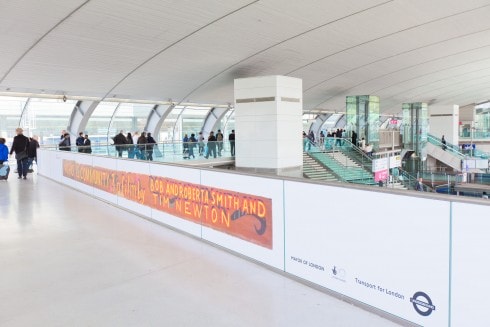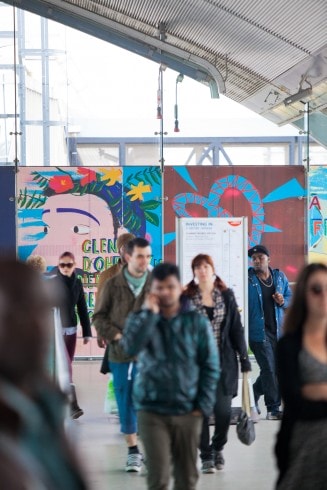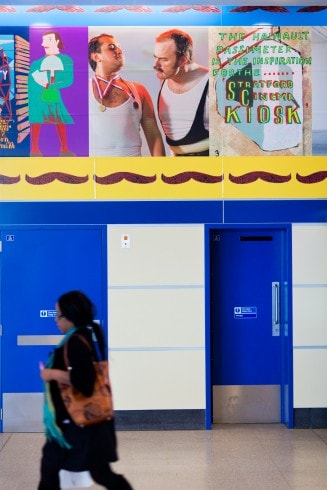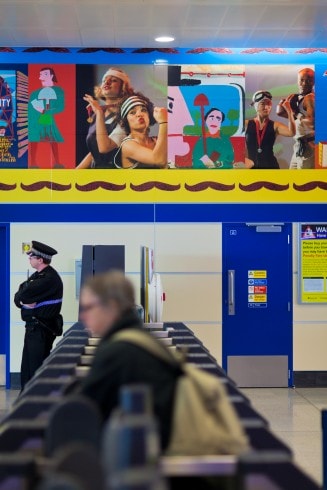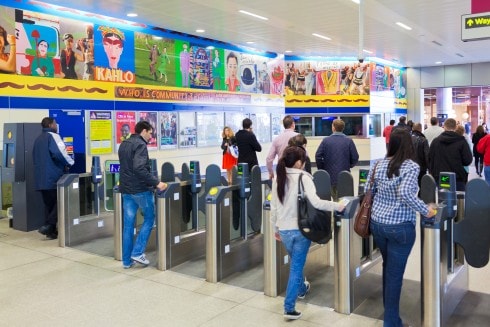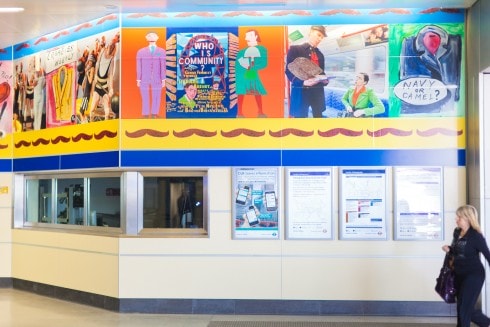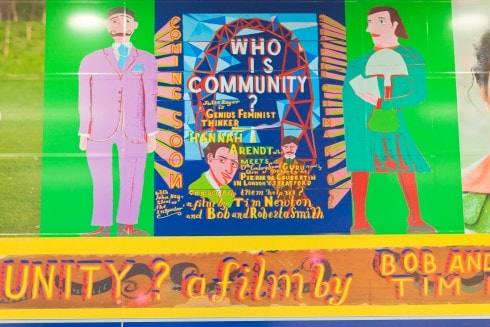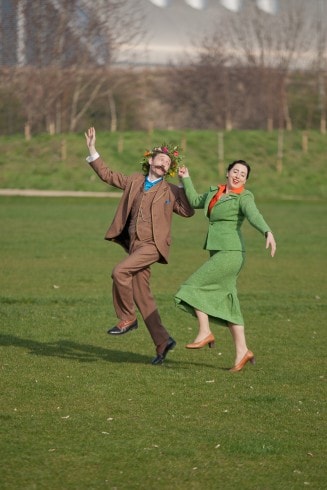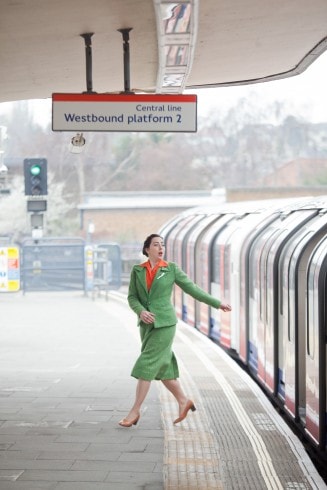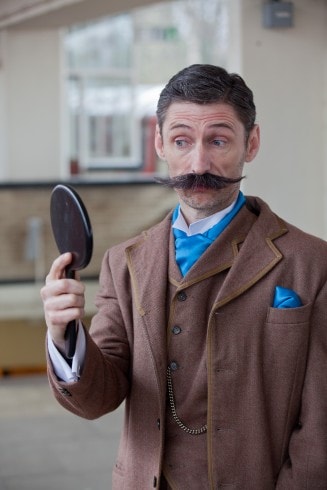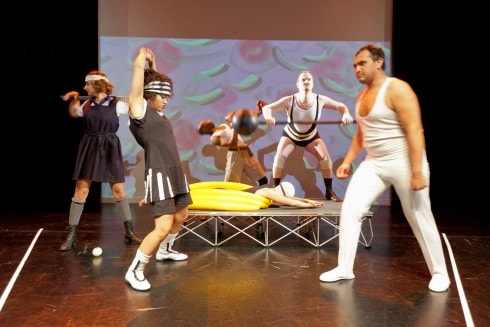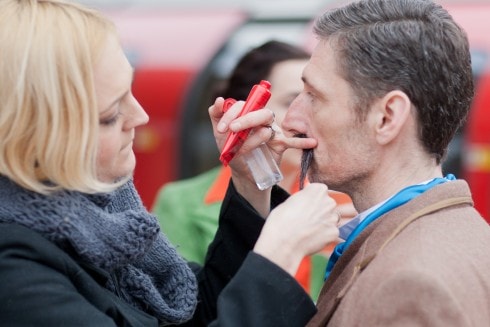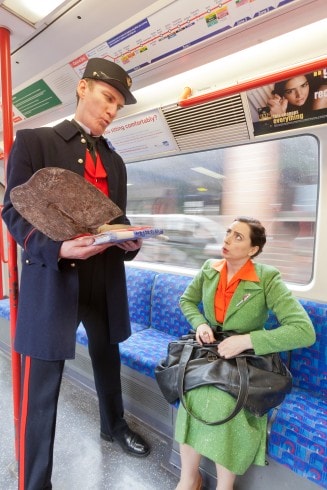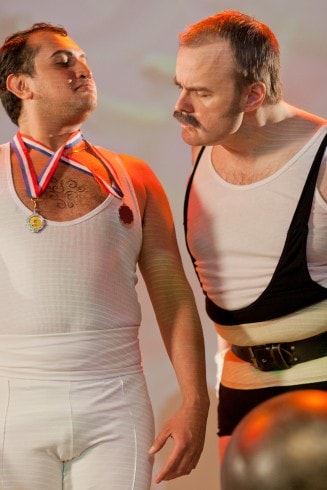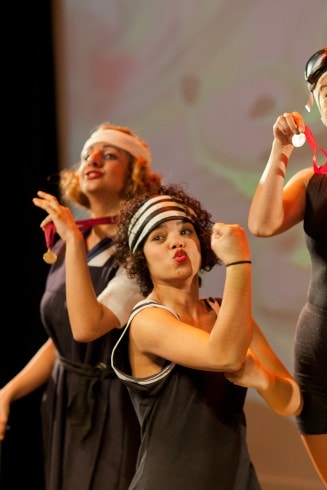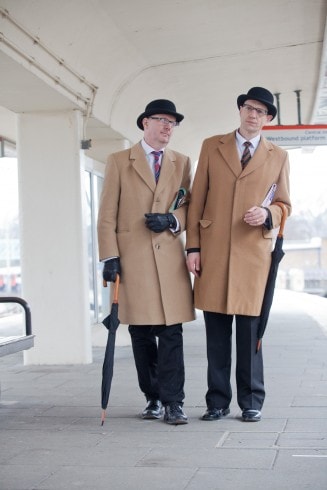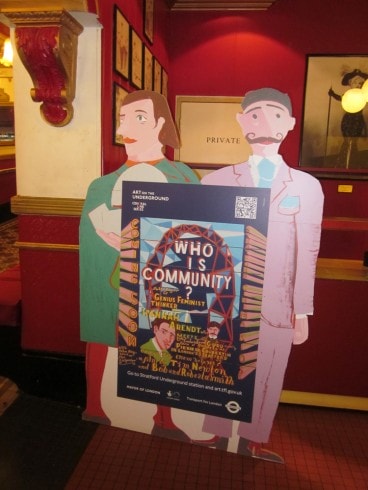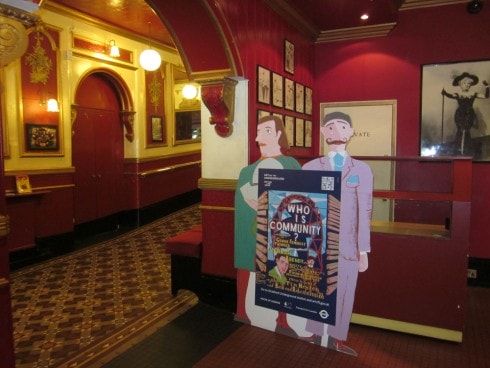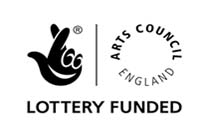Who is Community? is a commission by artist Bob and Roberta Smith and film director Tim Newton. The project, part of the Central Line Series brought together a number of different elements, including reproductions of paintings made by Bob and Roberta Smith for Stratford Underground station and a film teling the story of an extraordinary fictional meeting between Pierre de Coubertin, father of the modern Olympics, and the German theorist Hannah Arendt.
Reflecting upon the context of Stratford as the main site of the London 2012 Olympic and Paralympic Games, Who is Community? explores themes of public space, social interaction and well-being, as well as the democratic values that Coubertin hoped to advance through sport, and the revival of the ancient Olympic games.
Who is Community? is the latest in a series of collaborations by Bob and Roberta Smith and Tim Newton. Both live along the Central line in Leytonstone, a community that was the subject of their collaborative film of 2011. Newton’s most recent short film Trimming Pablo (2011) is a fictionalised account of Picasso’s visit to the 1950 Sheffield Peace Congress, and features a cameo from Bob and Roberta Smith.
Bob and Roberta Smith has worked in a variety of media including painting, performance, sculpture, film and installation. He is known for employing DIY methods – including painting on pieces of scrap wood – and a number of influences from punk to folk in order to personalise political sloganeering. Using humour as a tactic, his work often challenges respected authorities. In a number of earlier works, he made paintings that depicted fictional meetings between real-life characters, across time. Set in modern-day Stratford, the film Who is Community?, will employ a similar technique, imagining a romantic tryst between Pierre de Coubertin and Hannah Arendt.
Born into a family of secular German Jews in 1906, Hannah Arendt was a political theorist. She studied philosophy under Martin Heidegger and later befriended the philosopher Walter Benjamin, in Paris. After the Nazi occupation of France, Arendt fled Paris, and in 1941 settled in the United States. She is well known for her ideas on freedom as something that is constructed in the community, when its members bring their uniqueness to a shared space.
Pierre de Coubertin was a French aristocrat and founder of the International Olympic committee. Born in 1863, it is highly unlikely that he ever met Arendt. However, in imagining a meeting between the two thinkers, Bob and Roberta Smith and Tim Newton invite the idea that there may have been a synergy between their beliefs. Coubertin was interested in the educative potential of sport to create ‘moral and social strength’ and its ability to cut across class lines. In founding an international festival of sport, at a moment when the world was coming out of a series of international conflicts, including the Franco-Prussian War, he established a legacy that remains today: the maintenance of peace through athletic competition.
In the film Who is Community? Arendt and Coubertin meet at Loughton station on the Central line and fall in love. The story is narrated from the perspective of the community of Stratford, and the courtship unfolds across a number of locations in the district, from the newly landscaped Fat Walk area of the Lea Valley to the café outside Leytonstone Underground station. Drawing upon the cinematic style of silent comedies, the film makes particular reference to the period of the early 1900s, for example in its focus on the art-deco architecture of Loughton Underground station platform, and in the turn-of-the-century costumes of the Olympic athletes – who live in Coubertin’s moustache! The film will be shown (from October 2012) on a specially designed structure in Stratford station, modelled after an original ticket kiosk that was installed at Hainault station in 1948 (pictured below). Known as passimeters, these kiosks were introduced to the Underground in the early 1920s.
Painted cut-out figures of Arendt and Coubertin appeared at various venues around Stratford, including Stratford Circus, Stratford East Picture House, Rosetta Art Centre, UEL, Theatre Royal Stratford East and The Nunnery.
